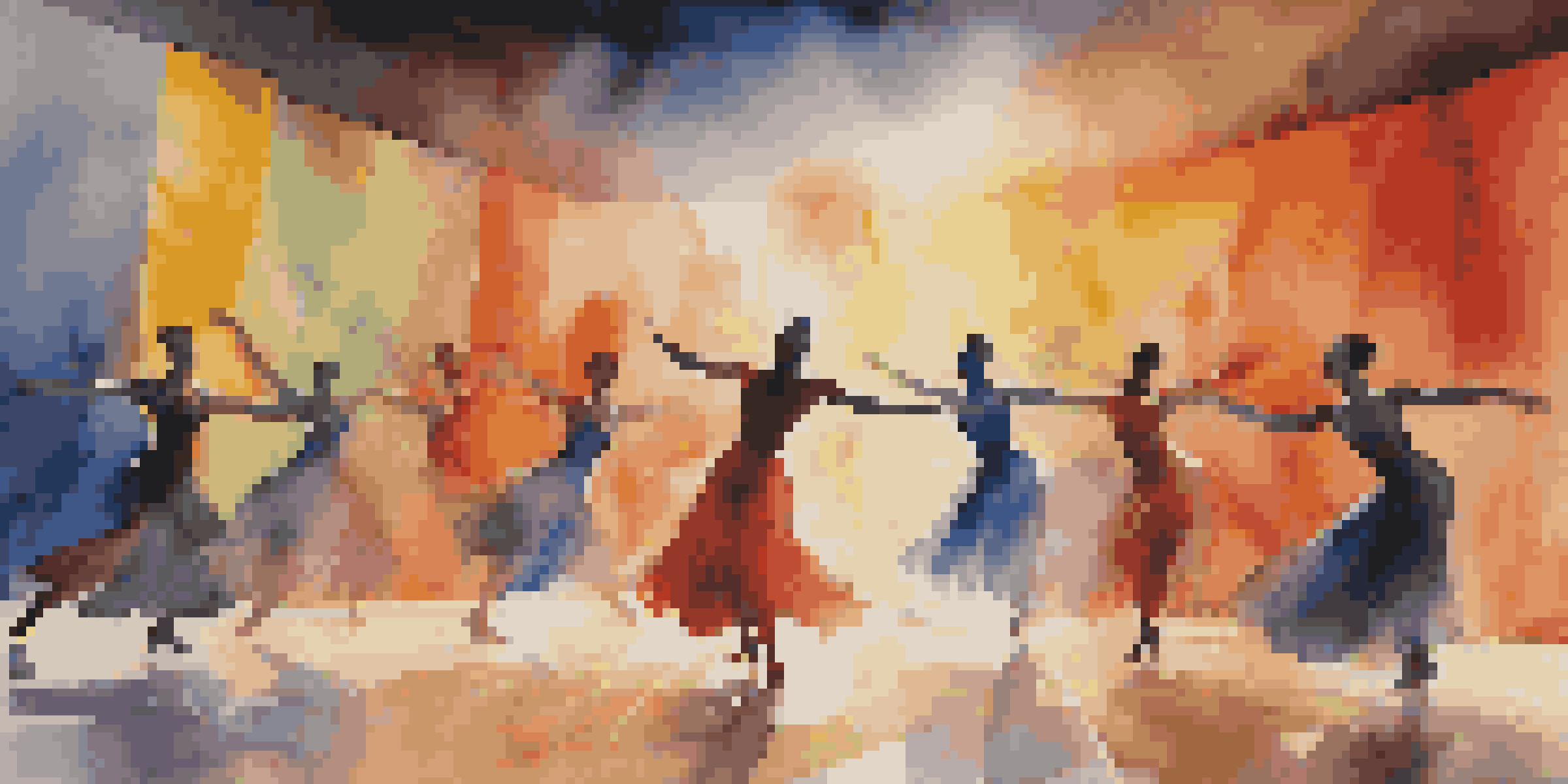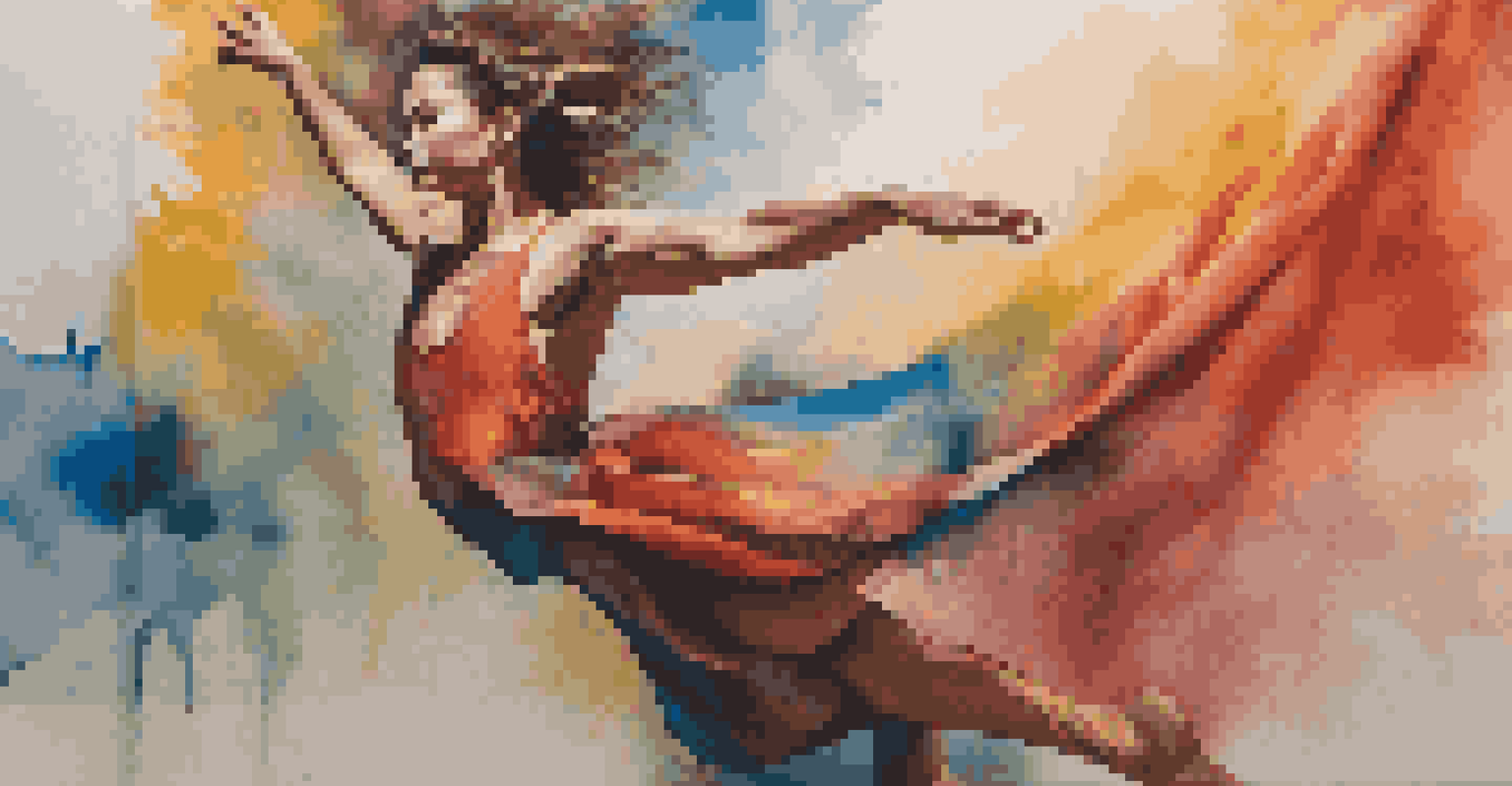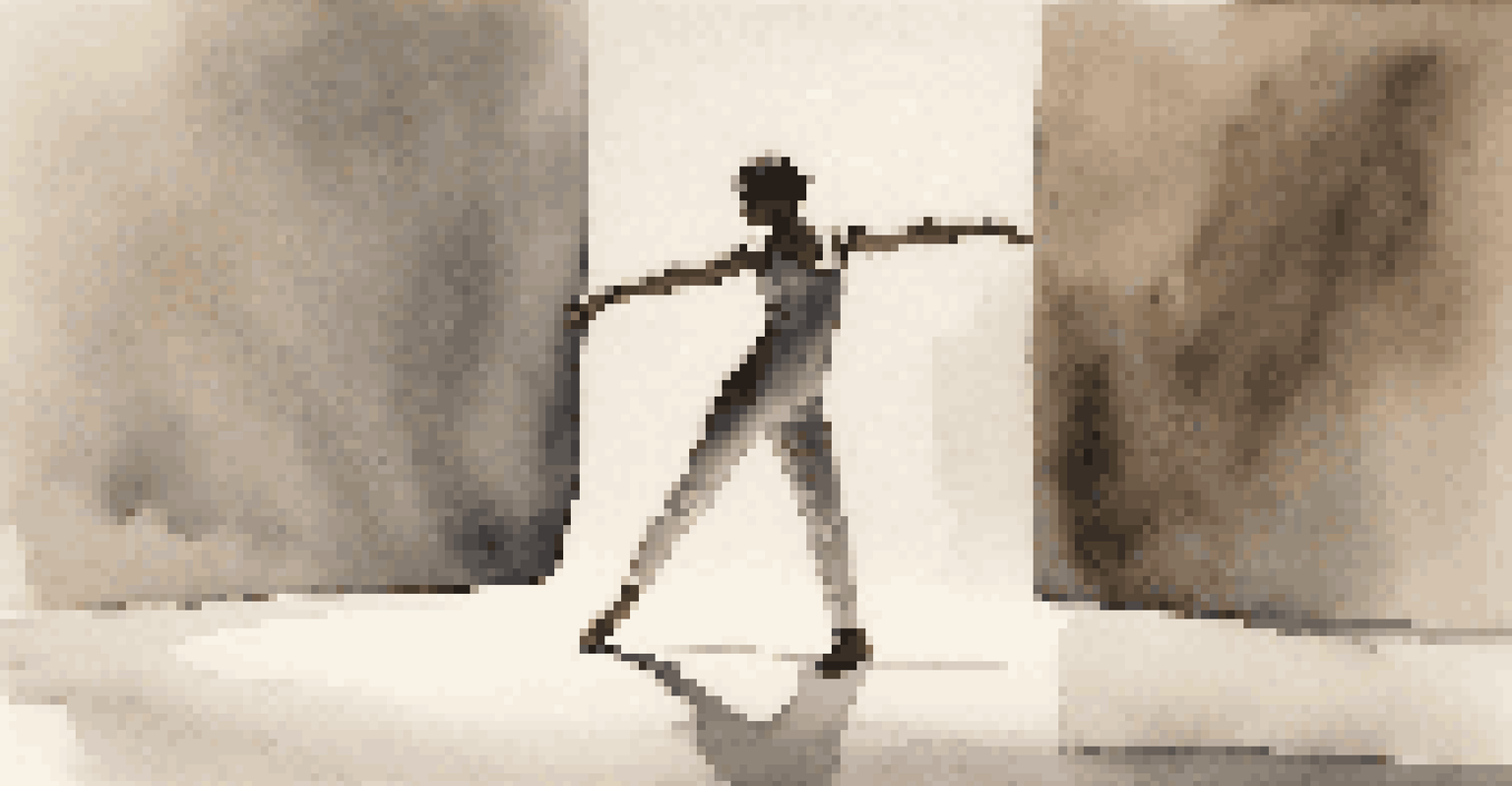Influential Artists Who Combined Dance and Visual Art

Martha Graham: Dance as a Visual Language
Martha Graham is often considered a pioneer in modern dance, but her influence extends into the realm of visual art. By collaborating with painters and sculptors, such as Isamu Noguchi, she transformed dance into a powerful visual experience. Her choreography was not just movement but an expression of emotions and ideas that resonated visually and physically.
Dance is the hidden language of the soul.
Graham's approach to dance emphasized the importance of space and form, akin to how a painter views a canvas. Each movement told a story, much like a brushstroke creates meaning on a painting. This interconnectedness between dance and visual art opened the door for future collaborations that would push artistic boundaries.
Through her innovative work, Graham paved the way for dancers to be seen as artists in their own right, encouraging a dialogue between disciplines. Her legacy lives on in the way contemporary artists continue to explore the fusion of movement and visual expression.
Yoko Ono: Performance Art and Dance Unite
Yoko Ono's contributions to both visual art and performance art illustrate a unique blend of dance and creativity. Her interactive installations often engage participants in movement, making them part of the artwork itself. For instance, her famous piece 'Cut Piece' invited the audience to cut away pieces of her clothing, merging vulnerability with physical action.

Ono's work challenges the traditional boundaries of art, as she often incorporates elements of dance into her performances. This approach creates an immersive experience that encourages viewers to rethink their role as passive observers. By participating, they become active contributors to the artistic narrative.
Dance as a Visual Art Form
Pioneers like Martha Graham and Merce Cunningham demonstrated that dance can coexist with visual art, creating a powerful, multi-sensory experience.
Through her innovative vision, Ono emphasizes that art is not just to be viewed but also experienced. This philosophy has inspired countless artists to explore the relationship between movement and visual aesthetics, further cementing her place in the art world.
Robert Rauschenberg: Dance and Mixed Media
Robert Rauschenberg was a key figure in the pop art movement, known for his unique use of mixed media that often included dance elements. His performances, such as 'Pelican,' combined dance with visual art to create an engaging spectacle that challenged conventional art forms. Rauschenberg's work blurred the lines between different artistic disciplines, illustrating how they can coexist and enhance each other.
The artist is present. It is a moment of silence and stillness, where the body becomes a living canvas.
His collaboration with choreographer Merce Cunningham showcased the synergy between visual art and dance. Together, they created performances that emphasized spontaneity and chance, reflecting the unpredictability of life itself. This approach invited audiences to witness art in a dynamic, ever-changing context.
Rauschenberg's innovative spirit continues to influence artists today, as they explore the intersection of various art forms. His legacy serves as a reminder that creativity knows no boundaries, and that dance can profoundly enhance visual storytelling.
Bill T. Jones: Storytelling Through Movement and Art
Bill T. Jones is renowned for his ability to weave narrative and movement into a visually striking tapestry of performance art. His works often explore complex themes such as race, identity, and mortality, using dance as a means of storytelling. By integrating visual elements like projections and set design, Jones transforms the stage into a multifaceted canvas.
Jones's collaborations with visual artists have led to thought-provoking performances that resonate deeply with audiences. For example, his piece 'Still/Here' combined video installations with live dance, creating a powerful commentary on illness and survival. This fusion of disciplines invites viewers to engage with the themes on both an emotional and intellectual level.
Audience Engagement in Art
Artists such as Yoko Ono and Marina Abramović invite viewers to actively participate in their performances, transforming them from passive observers to integral parts of the artwork.
Through his innovative approach, Jones has changed the landscape of performance art, demonstrating that dance can be both a personal and communal experience. His work encourages artists to think critically about how movement and visual art can coexist and enrich each other.
Marina Abramović: The Body as a Canvas
Marina Abramović's work blurs the lines between visual art and performance, using her body as a living canvas. Her performances often challenge physical and emotional limits, inviting viewers to witness the rawness of human experience. In pieces like 'The Artist Is Present,' she creates an intimate connection with participants, emphasizing the power of presence.
Abramović’s approach to art challenges traditional notions of what performance can be, as she often incorporates elements of dance into her work. By emphasizing movement and stillness, she invites audiences to reflect on their own experiences and emotions. This fusion creates a unique dialogue between the artist and the viewer.
Her groundbreaking work has inspired countless artists to explore the relationship between the body, movement, and visual expression. Abramović reminds us that art can be a powerful tool for connection, pushing the boundaries of how we perceive and engage with creativity.
Merce Cunningham: Dance and Visual Art Collaboration
Merce Cunningham, a revolutionary figure in modern dance, was known for his collaborations with visual artists like Andy Warhol and Robert Rauschenberg. His belief that dance could stand alone as an art form led to groundbreaking performances where movement and visual design coexist harmoniously. Cunningham’s innovative choreography often involved elements of chance, reflecting the spontaneity of life itself.
By integrating visual art into his performances, Cunningham created a multi-sensory experience that captivated audiences. His use of technology and multimedia opened new avenues for artistic expression, allowing dance to interact with visual elements in unprecedented ways. This approach has inspired future generations of artists to explore similar collaborations.
Storytelling Through Movement
Bill T. Jones and Pina Bausch exemplify how dance can convey complex narratives and emotions, enriching the artistic experience through visual and theatrical elements.
Cunningham's legacy continues to influence contemporary dance, as artists today seek to merge movement with a variety of visual arts. His work encourages a dialogue between disciplines, demonstrating that the boundaries of art are meant to be pushed and redefined.
Pina Bausch: Theatrical Dance and Visual Storytelling
Pina Bausch revolutionized the world of dance theatre by integrating visual storytelling into her performances. Her unique style combined elements of dance, drama, and visual art, creating a rich tapestry of emotion and narrative. Bausch's works often featured elaborate sets and costumes, transforming the stage into a vivid landscape that enhanced the storytelling.
Her approach emphasized the importance of movement as a means of communication, allowing dancers to express complex emotions and themes. Through her collaborations with visual artists, Bausch created immersive experiences that resonated deeply with audiences. This fusion of dance and visual art challenged the conventional boundaries of performance.

Bausch's impact on the art world is profound, inspiring artists to explore the interplay between movement and visual aesthetics. Her legacy serves as a reminder of the power of storytelling, encouraging a deeper connection between the performer and the audience.